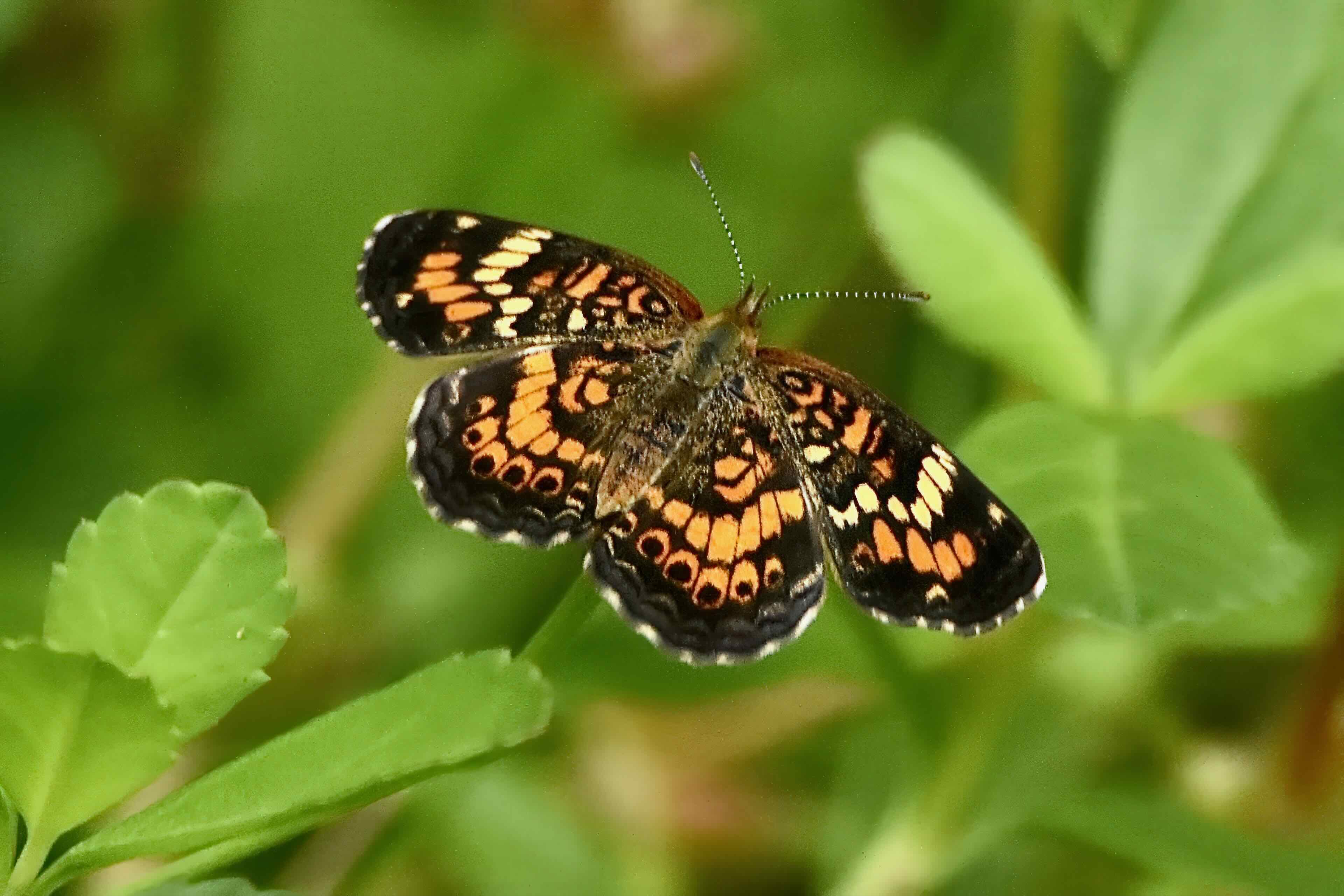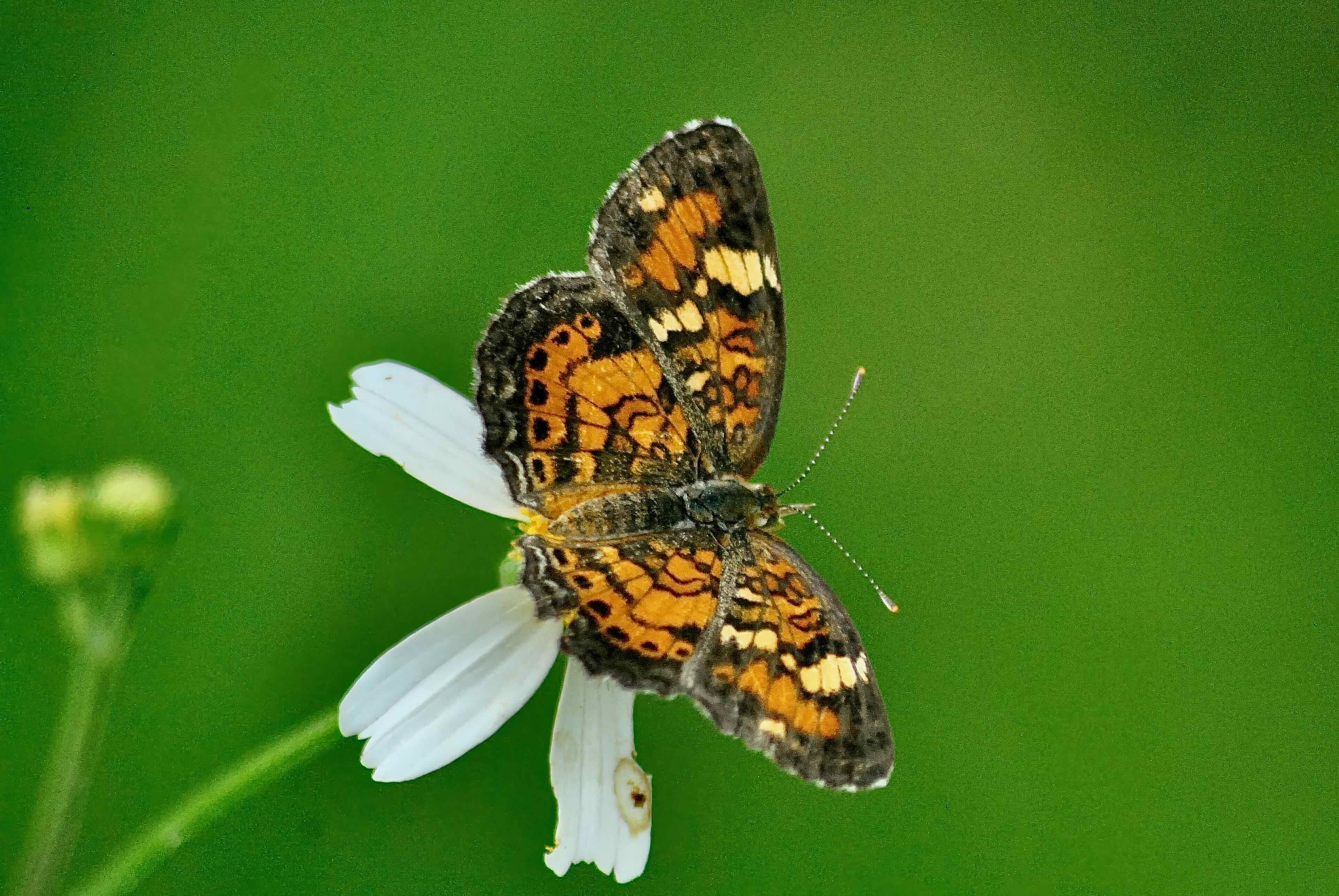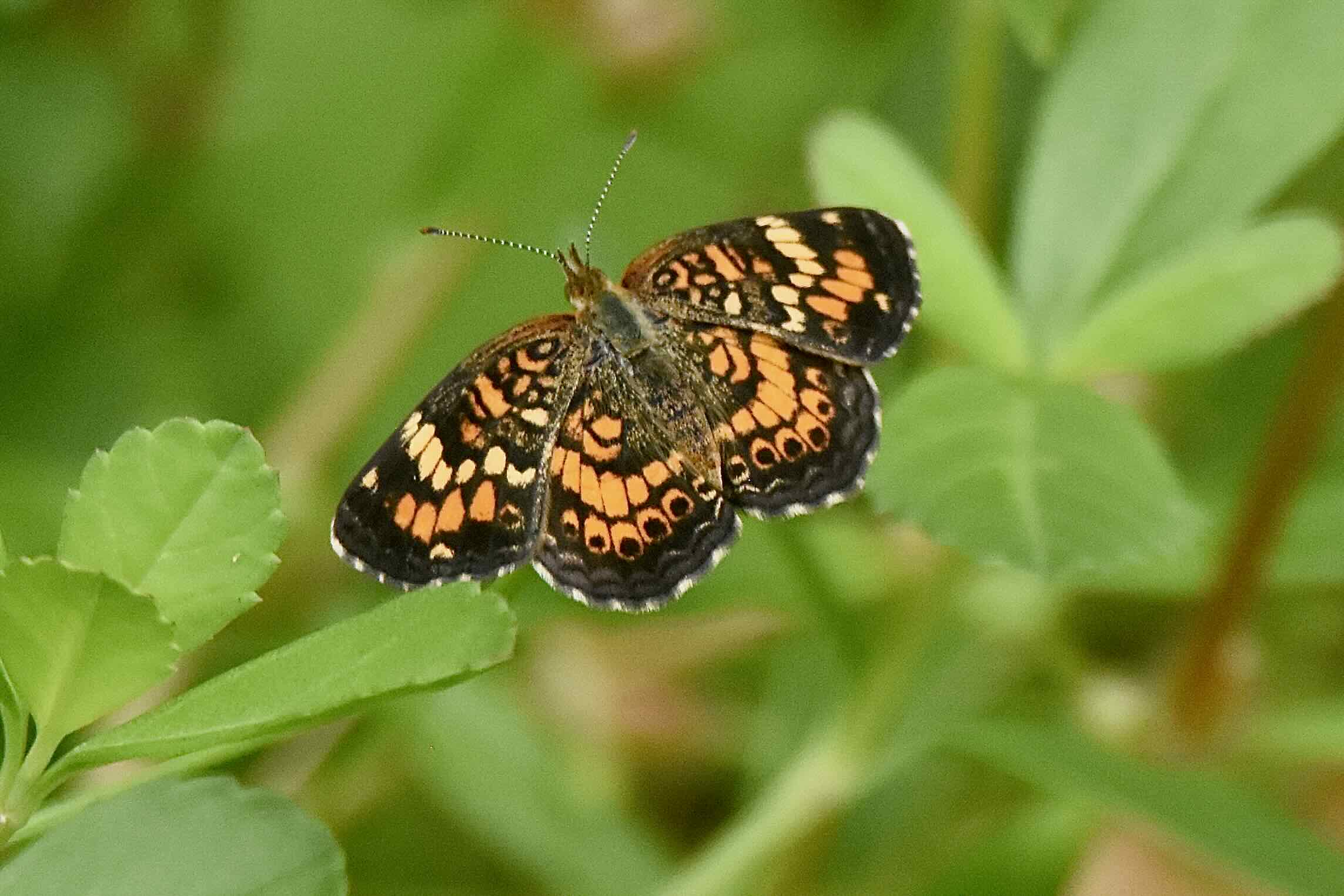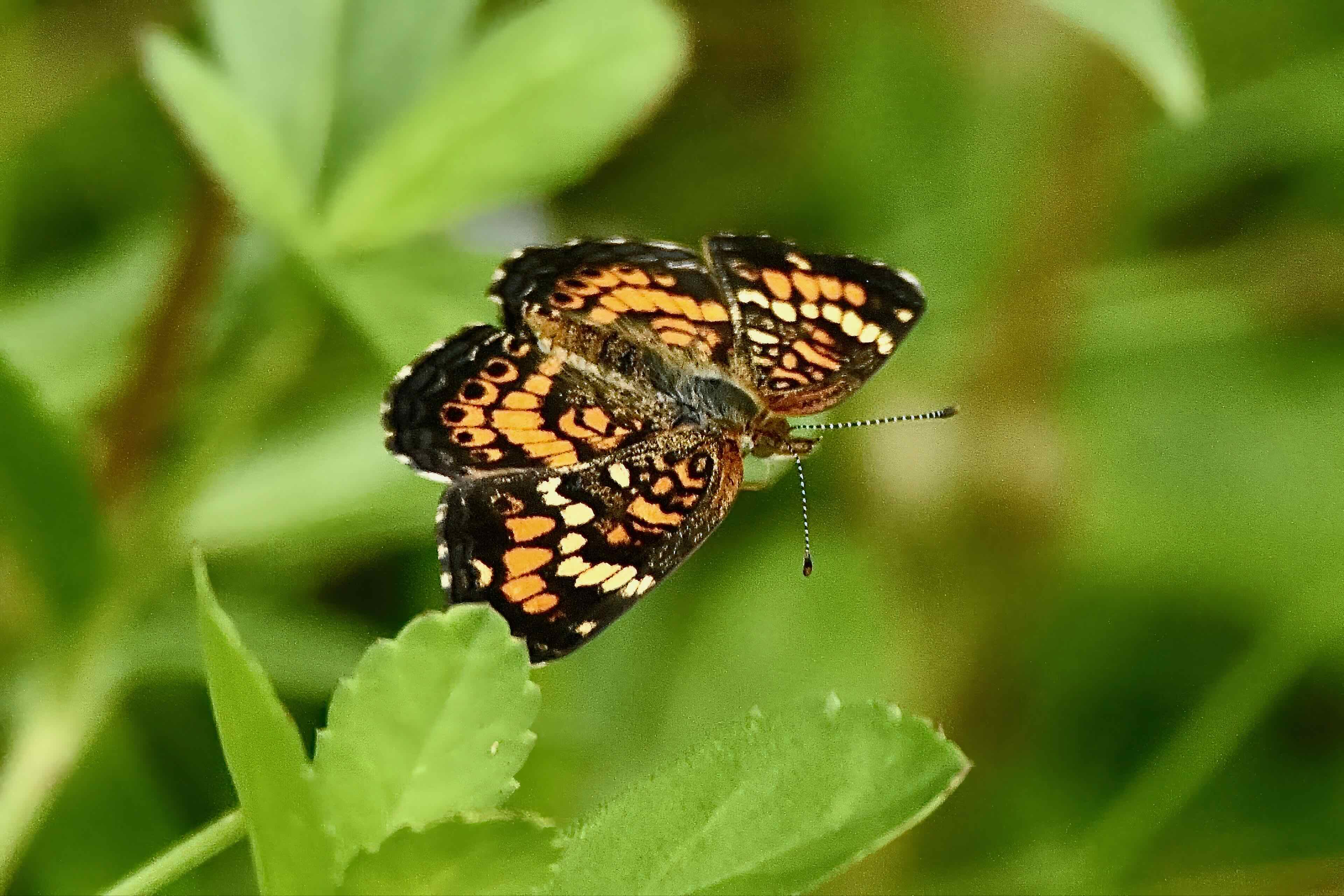
Phaon crescent butterfly, photographed at Anastasia Beach State Park, St. Augustine, St. Johns County, in Octber 2018.
In Greek mythology, there was a boatman named Phaon, who was old and ugly. One day, the goddess Aphrodite came along requiring his services to cross a river, which he provided without charging her. In return, Aphrodite gave him an ointment that made him young and beautiful. So beautiful, in fact, that many became captivated by his good looks.
So the name of this little butterfly, the Phaon crescent, Phyciodes phaon, is quite appropriate. Like its namesake, its beauty is captivating.
It is fairly common in Florida, found throughout the state's 67 counties. The Phaon crescent's natural range includes muh of the southern tier of the United states, from southeastern California, New Mexico, South Texas, along the Gulf Coast to Florida and northward to the Carolinas. Its range also includes Mexico, Guatemala and Cuba. It's known to stray occasionally as far north as Nebraska, Wyoming and Colorado.
The Phaon crescent closely resembles a cousin called the pearl crescent butterly, Phyciodes tharos, which is also fairly common throughout Florida. One difference is in the size — the Phaon is a bit smaller, with a wingspan between 1 and 1.5 inches.
Both species can vary in appearance but they're both orange and black, with a light-colored crescent-shaped mark on a dark background along the edge of the the hind wing. The most easily noticed difference between the pearl and the Phaon is the cream-colored lines on the Phaon's forewings. Pearls don't have them.
There are two other members of the clan closely resemble the pearl and the Phaon but neither is found in Florida.
Fogfruit and several other members of the verbena family serve as host plants for the Phaon. Males spend their time patrolling near host plants hoping to find the lady Phaon of their dreams. Females will lay small clusters of eggs on the undersides of the leaves, which become food for the young caterpillars, which light brown with dark brown lines. They'll eat together after hatching but grow increasingly solitary as they mature. In Florida, Phaons lay eggs throughout the year but are limited further north to early spring through early fall.
Adults prefer the nectar of fogfruit and other members of verbena, along with Spanish needles, seen in the top and bottom photos, and other members of Asteraceae, the aster family.
Habitat for the Phaon crescent includes open areas such as dunes, pastures, fields and roadsides. It is a member of Nymphalidae, the brushfoot family.



